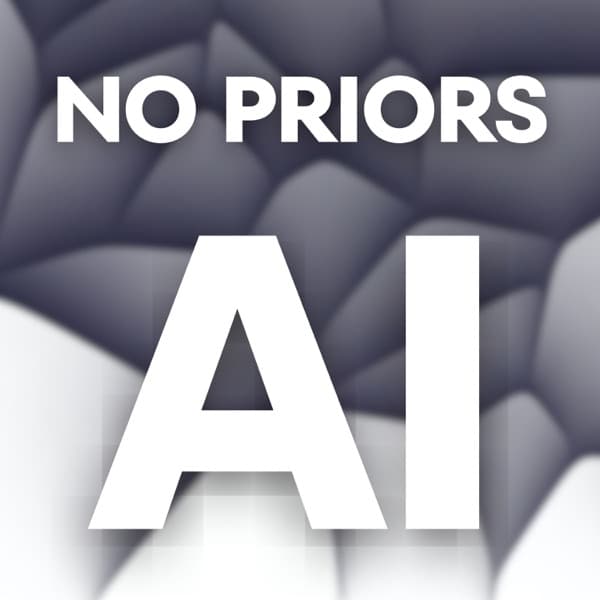TechCrunch: The podcast discusses Amazon's new AI-enabled Alexa, leadership changes at Lucid Motors, Bridgetown Research's AI for due diligence, and the rise of humanoid robots.
a16z: The discussion highlights the importance of securing people, not just systems, against cyber threats, emphasizing the role of training and awareness in preventing attacks.
a16z: AI-generated code often contains security vulnerabilities, and alignment techniques are crucial to improve code quality and security.
a16z: Deep Seek, an open-source reasoning model from China, faces scrutiny for its susceptibility to jailbreaks and political censorship, raising concerns about its use in enterprise settings.
Fireship: GPT 4.5's release is underwhelming, offering no significant advancements and being highly expensive.
The Twenty Minute VC (20VC): Venture Capital | Startup Funding | The Pitch: The discussion focuses on growth strategies, emphasizing experimentation, hiring for potential, and the importance of velocity over perfection.
TechCrunch Startup News: Bridgetown Research uses AI agents to streamline due diligence processes, reducing costs and time.
TechCrunch Startup News: Anagram, formerly Cypher, offers engaging cybersecurity training to reduce human-driven breaches.
TechCrunch - Every year, it seems like there's at least one big YC controversy
The podcast begins with a discussion on Amazon's unveiling of a new AI-enabled version of Alexa, which aims to incorporate generative AI to enhance user interaction by remembering user preferences and handling complex tasks. This development is significant as it could set Amazon apart from competitors like Siri, though integrating generative AI with third-party tools remains challenging.
The conversation then shifts to Lucid Motors, where CEO Peter Rollinson's unexpected resignation raises questions about the company's future. Despite producing the Air sedan and planning the Gravity SUV, Lucid faces financial struggles and must find a new CEO to navigate these challenges. The discussion highlights the importance of strategic leadership during critical times for the company.
Next, Bridgetown Research's $19 million funding round is explored. The startup aims to revolutionize due diligence in venture capital by automating the process with AI, potentially reducing the need for manual expert consultations. This innovation could streamline investment decisions, though concerns about over-reliance on AI and potential groupthink are noted.
Finally, the podcast touches on the growing interest in humanoid robots, with companies like Figure developing AI models for robots to perform household tasks. This trend reflects advancements in AI and robotics, with potential applications in personal assistance and manufacturing. The discussion also considers the cultural fascination with humanoid robots and their practical implications.
Key Points:
- Amazon's new Alexa aims to use generative AI for smarter interactions, setting it apart from Siri.
- Lucid Motors faces leadership changes amid financial struggles, highlighting the need for strategic direction.
- Bridgetown Research seeks to automate due diligence with AI, potentially transforming investment processes.
- Humanoid robots are gaining interest, with AI advancements enabling them to perform complex tasks.
- The podcast highlights the cultural and practical implications of AI and robotics in everyday life.
Details:
1. 🚗 Introduction and Audi Sponsorship
- Audi has launched the all-new fully electric Audi Q6 e-tron, emphasizing its effortless power and serious acceleration as standout features.
- Advanced Audi technology in the Q6 e-tron positions it as not just a new vehicle, but a transformative driving experience.
- This launch marks the beginning of a new chapter for Audi, highlighting their commitment to electric vehicles.
- The sponsorship with Audi includes promoting the Q6 e-tron, indicating strategic goals to boost brand recognition and align with sustainable driving solutions.
2. 🎵 Musical Interlude
- No actionable insights or metrics available as this segment contains only music.
3. 🔍 Amazon's Alexa AI Upgrade
- Amazon aims to enhance Alexa with advanced generative AI capabilities, allowing users to perform tasks like booking reservations based on past interactions.
- The new AI features are designed to make Alexa smarter and more personalized, remembering details about user preferences and interactions.
- Amazon is planning to launch this upgraded version of Alexa within a few months, aiming to be the first to market with such advanced AI capabilities.
- Currently, Alexa performs a variety of tasks such as setting alarms, playing music, and providing weather updates. The new AI upgrade will build upon these capabilities by adding a layer of personalized interaction.
- Potential challenges include ensuring user data privacy and managing the complexity of AI-driven interactions.
4. 🚙 Lucid Motors Leadership Shake-Up and Market Dynamics
4.1. Lucid Motors Leadership Changes and Strategic Challenges
4.2. Lucid Motors' Market Position and Investor Influence
4.3. Innovations in Due Diligence: Bridgetown Research's AI Approach
4.4. Y Combinator's Strategic Investments and Ethical Challenges
4.5. Advancements in Humanoid Robotics and AI
5. 🤖 Innovations in AI and Robotics
- threads Equity is produced by Teresa loon solo with editing by Kell we'd also like to thank Tech crunch's audience development team thank you so much for listening and we'll talk to you next time
a16z - Staying vigilant against deepfakes
The conversation emphasizes the critical need to focus on securing individuals, as nearly 90% of cyber attacks exploit human vulnerabilities. Despite advancements in securing systems, particularly email, other channels remain highly exposed. The rise of open-source models like Deep SE has increased the sophistication and accessibility of attacks, allowing adversaries to execute complex operations from anywhere. Practical advice includes educating employees about potential threats and regularly testing organizational vulnerabilities.
The discussion also highlights the evolution of social engineering attacks, with a significant increase in deep fake incidents. The conversation stresses the importance of personalized and engaging training to improve security awareness and response. The use of AI in training can enhance its effectiveness by making it more relevant and up-to-date. The potential for AI to be used both offensively and defensively in cybersecurity is acknowledged, with a call for continuous vigilance and adaptation to emerging threats.
Key Points:
- Focus on securing people, as 90% of attacks exploit human vulnerabilities.
- Educate employees on potential threats and regularly test vulnerabilities.
- Increase in deep fake attacks requires updated and engaging training.
- AI can enhance training effectiveness by making it relevant and up-to-date.
- Continuous vigilance and adaptation are crucial in combating evolving threats.
Details:
1. 🔒 Securing People: The Weakest Link in Tech
- Nearly 90% of cyber attacks occur due to human-related vulnerabilities, underscoring the critical need to focus on securing people, not just technological systems.
- Significant advancements have been made in securing email, a primary attack vector, but other channels remain highly exposed and require equal attention and vigilance.
- Security leaders must prioritize comprehensive employee education on potential attacks and implement regular testing to identify and mitigate organizational vulnerabilities effectively.
- Incorporating case studies and real-world examples of breaches can enhance understanding and preparation.
- Developing tailored training programs that address specific vulnerabilities and encourage proactive security practices among employees can significantly reduce risks.
2. 🌐 Open Source Models: Opportunities and Threats
- Since ChatGPT's release two years ago, Social Engineering attacks have increased by over 400%.
- In 2024, the United States experienced over 100,000 deep fake attacks, reflecting a significant rise in AI-driven threats.
- The prevalence of deep fake attacks has grown sharply, with over 30-40% of security officers reporting experiences with such incidents, up from 5-10% a year ago.
- Open source AI models, like the Deep Seek model, present opportunities for innovation but also pose risks as they can be exploited by adversaries.
- The rise of AI-driven threats necessitates new strategies for mitigating security risks, such as developing advanced detection systems and enhancing regulatory frameworks.
- Examples of AI-driven threats include phishing scams using sophisticated AI-generated messages and deep fakes used to impersonate individuals for fraudulent activities.
3. 🔍 Deep Fake Dangers: Rising Sophistication
- Attackers can now use sophisticated models on consumer devices to execute attacks, increasing accessibility and reducing the need for established security measures.
- Smartphones enable anyone from any location to conduct sophisticated attacks, indicating a likely increase in attack frequency.
- Email remains a significant attack vector, but new models allow for other vectors like voice, SMS, video, and chat to be exploited at scale.
- The cost of executing large-scale attacks has decreased, making brute force attacks more feasible.
- An example of a deep fake attack includes a simulated virtual kidnapping where a victim's voice was replicated to demand money, showcasing the potential for highly convincing scams.
- Financial institutions have reported a 60% increase in fraud attempts using deep fake technology, highlighting the need for advanced detection systems.
- Security experts predict a 50% rise in deep fake-enabled attacks over the next year, emphasizing the urgency for improved preventive measures.
- Emerging defense strategies include AI-driven detection algorithms and cross-platform monitoring to counteract these versatile attack vectors.
4. 📞 Protecting Against Voice Replication Scams
- To prevent voice replication scams, delete any voicemail greetings recorded in your own voice, as even small samples can be used to replicate your voice with modern technology.
- Be cautious of calls from unknown numbers, as scammers need only a few seconds of your voice to replicate it.
- Limit your responses during unsolicited calls to avoid providing further voice samples that could be misused.
5. 🏢 AI Scams: Enterprise Vulnerabilities
- Generative AI is enhancing the effectiveness of scams by improving impersonation techniques, making it easier for scammers to deceive employees.
- Historically, scams have involved impersonating high-level executives, such as CEOs, to trick employees into transferring funds or purchasing gift cards, showcasing a common method of exploitation.
- The hierarchical structure of organizations contributes to the success of these scams, as employees are often hesitant to question instructions from superiors, underlining the importance of fostering a questioning culture within companies.
- Research shows that nearly 90% of security breaches stem from human error, indicating a critical need for comprehensive employee-focused security training programs to reduce these vulnerabilities.
- Despite improvements in email security, other communication channels (e.g., phone calls, text messages) remain susceptible to attacks, necessitating heightened security measures across all platforms.
6. 📚 Enhancing Security Training Effectiveness
6.1. Key Insights from Security Training Segment
6.2. Strategies for Improving Security Training
7. 🤖 AI in Security: Training and Defense
- Adaptive security utilizes AI, including deep fakes, to create realistic and personalized training scenarios for corporate executives, which can enhance preparedness against cyber threats.
- AI-driven attacks, such as those employing spear phishing techniques, can target individuals with 90% of attacks focusing on exploiting human vulnerabilities.
- Sophisticated social engineering attacks now incorporate AI-generated typographical errors to improve phishing engagement rates.
- AI automation in hacking operations mirrors business automation, making cyberattacks more profitable and scalable.
- Organizations with inadequate training are more susceptible to sophisticated AI-powered attacks, indicating a need for stronger security education.
- AI-powered attacks have already led to significant financial losses, and there is an increasing threat to critical infrastructure, underscoring the potential for severe, even life-threatening, consequences.
8. ⚔️ AI Arms Race: Attackers Versus Defenders
8.1. Emerging Threats and Vulnerabilities
8.2. Strategic Responses and Training Innovations
9. 🌟 Staying Informed: Security Resources
- While many technical systems are satisfactory, human systems often lag behind, highlighting the need for improved human factors in security management.
- Andreessen Horowitz's blog post outlines 16 practical security measures, emphasizing the importance of regular system updates and providing actionable guidance.
- To stay informed on cutting-edge security developments, it is recommended to follow knowledgeable individuals such as security experts and thought leaders on social media platforms.
- The speaker actively contributes to security discussions on social media, demonstrating a proactive approach to information sharing and community engagement.
- Adaptive Security's blog is identified as a valuable resource for continuous updates on recent attacks and security insights, suggesting it as a go-to source for security professionals.
a16z - Avoiding vulnerabilities in AI code
The discussion highlights the prevalence of security vulnerabilities in AI-generated code, particularly due to the inclusion of hardcoded API keys and passwords. Data scientists, who frequently share access credentials, contribute to this issue. The conversation explores three main techniques to align AI models for better security: data curation, reinforcement learning, and constitutional AI. Data curation involves filtering training data to exclude harmful content, but it risks losing valuable information. Reinforcement learning adjusts AI behavior by rewarding desirable outputs, though it can unintentionally skew results. Constitutional AI acts as a supervisory layer, editing outputs to ensure security compliance. The conversation emphasizes the need for human oversight in code review, especially in under-resourced teams, until AI alignment techniques mature. The alignment challenge is significant, with AI companies investing heavily to ensure models do not produce harmful or insecure outputs. The discussion also touches on the potential for AI to become powerful hackers if not properly aligned, highlighting the importance of ongoing research and development in AI safety and security.
Key Points:
- AI-generated code often includes security vulnerabilities like hardcoded API keys.
- Data curation, reinforcement learning, and constitutional AI are key alignment techniques.
- Human oversight in code review remains crucial until AI alignment improves.
- AI alignment is a major challenge, with significant investment in safety and security.
- AI could become a powerful hacking tool if not properly aligned.
Details:
1. 🔑 Data Scientists & Security Risks
- Data scientists often leak API keys and passwords more frequently than site reliability engineers due to their primary focus on data access, highlighting the need for improved security protocols.
- Jupyter Notebooks are commonly used by data scientists and frequently contain sensitive information like database passwords. These are often shared within teams, inadvertently increasing security risks.
- Reinforcement learning approaches can be employed to encourage practices that avoid hardcoding sensitive information such as API keys in code snippets, which may otherwise alter data scientist behaviors.
- It's crucial to tailor security measures with an understanding of data science practices to prevent unintended consequences that could impede functionality in large language models (LLMs).
- Implementing robust access control measures and regular security audits can help mitigate the risk of sensitive information leaks in data science environments.
- Organizations should consider training sessions focused on security best practices for data scientists to reduce the risk of exposing sensitive information.
2. 🚀 Rapid Advancements in AI Code Generation
- AI-generated code now constitutes approximately 20% of the codebase for many large companies, indicating a significant shift towards automation in software development.
- Corporate partners are observing significant productivity increases, leading to hiring freezes for new engineers, suggesting that AI is reshaping workforce strategies.
- For instance, Company X reported a 30% decrease in development time for new features after adopting AI tools, highlighting the efficiency gains possible with AI.
- Furthermore, Company Y experienced a 25% reduction in bug-related downtime, demonstrating improvements in code quality and reliability.
- These advances in AI code generation are enabling companies to reallocate resources towards more strategic initiatives, further enhancing their competitive edge.
3. 🤖 AI Alignment Challenges & Security Concerns
- Large language models generate significant code, including vulnerabilities such as embedded secrets, posing security risks.
- AI research acceleration is likely, as AI assists researchers, potentially leading to rapid advancements and increased complexity in AI development.
- Specific alignment challenges include ensuring AI systems' goals align with human values, preventing unintended consequences.
- Examples of security concerns include unauthorized access through AI-generated code vulnerabilities and the risk of AI systems being used maliciously.
- Strategies to mitigate these challenges include improving transparency in AI decision-making and developing robust security protocols.
4. 🔍 Security Vulnerabilities in AI-Generated Code
- A significant security vulnerability was identified in AI-generated code, where large language models (LLMs) tend to hardcode API keys directly into the code.
- When requested to write integrations (e.g., with GitHub or Stripe), the majority of LLMs hardcoded the API key instead of referencing it from an environment variable or using a secrets manager.
- Hardcoding API keys poses a serious risk as it can lead to exposure of sensitive information if the code is shared or uploaded to public repositories.
- Although the AI typically instructs users to insert their secret, it does not guide them to do so securely (e.g., using environment variables).
- To mitigate these risks, developers should use environment variables or a dedicated secrets manager to handle API keys securely.
5. 🛡️ Techniques for AI Alignment and Secure Coding
5.1. AI Alignment Techniques
5.2. Secure Coding with AI
6. 🔄 Reinforcement Learning & AI Biases
- AI companies face significant challenges in ensuring that models reflect desired values, such as promoting Martin Luther King Jr.'s values over those of Nazis.
- Data curation is a technique used to selectively curate input data to avoid training on undesired content, but this can lead to the omission of important literary works like those of Mark Twain or Dr. Martin Luther King Jr.
- Reinforcement learning adjusts AI behavior by favoring certain outputs (e.g., Martin Luther King content over Nazi content), potentially skewing model behavior away from disciplines such as data science.
- Constitutional AI uses a supervisory AI to review and edit outputs, ensuring they align with desired security and content standards, making it the most promising approach despite its cost.
- Training models on GitHub data introduces challenges due to insecure code prevalence; techniques like data curation and reinforcement learning can lead to unintended consequences.
- Startup founders without coding backgrounds sometimes advocate for removing code review checks based on AI-generated outputs, highlighting the risks of over-reliance on AI.
- Despite the cost, the Constitutional AI approach is considered the most promising for ensuring secure and appropriate AI behavior.
7. ⚖️ AI Governance and Security Measures
- AI code generation requires either a constitutional AI that understands secure coding practices or a human expert to review and tweak the code, ensuring compliance with security standards.
- Claude AI is currently perceived as the best for code generation, reportedly due to its alignment with safety and security priorities, although it's expected that competition will continue to evolve, potentially leading to better options.
- The quality of AI-generated code is comparable to that of a junior developer, necessitating ongoing reviews to maintain and improve quality, highlighting the significance of human oversight.
- Alignment remains a critical challenge for AI companies, impacting both the quality of code generation and the broader AI capabilities, indicating a need for continuous improvement in AI training and development.
- Improvements in AI alignment could lead to better code quality and potentially reduce the need for human oversight in the future, suggesting a strategic focus area for AI development.
8. 🔐 Future of AI in Secure Code Development
8.1. AI Alignment and Cybersecurity Investment
8.2. Human-AI Collaboration in Secure Coding
a16z - How to use DeepSeek safely
Deep Seek, a reasoning model from China, has garnered attention due to its open-source nature and the influence of the Chinese government on its development. The model is particularly susceptible to jailbreaks, making it less secure compared to other models like GPT. It performs about 20% worse than GPT in benchmarks, and its infrastructure is considered insecure. The model also has hard limits on politically sensitive topics, especially those related to China, which are heavily censored. This raises concerns about potential unknown manipulations or backdoors that could be present.
For enterprises considering using Deep Seek, the recommendation is to avoid using the China-hosted model due to security concerns and instead opt for US-hosted versions or wait for more stable open-source alternatives. The model's current state makes it unsuitable for end-user-facing applications due to its vulnerabilities. Enterprises are advised to wait for a more trusted source to produce a similar model that can be run locally, as Deep Seek is not considered a reliable daily driver due to its slow performance and occasional errors in output.
Key Points:
- Deep Seek is open-source and influenced by the Chinese government, raising security concerns.
- The model is highly susceptible to jailbreaks, performing 20% worse than GPT in security benchmarks.
- Deep Seek has hard limits on politically sensitive topics, especially those related to China.
- Enterprises should avoid using the China-hosted model and consider US-hosted versions or wait for alternatives.
- Deep Seek is not recommended for end-user applications due to its vulnerabilities and performance issues.
Details:
1. 🔍 Enterprise Caution with Deep Seek
1.1. Deployment Challenges
1.2. Security Concerns
1.3. Potential Solutions and Alternatives
2. 📰 Recent Buzz Around Deep Seek
2.1. Deep Seek and New Reasoning Models
2.2. Opportunities and Economic Implications
2.3. Risks and Security Concerns
3. 🌐 Open Source Models from China: Potential and Concerns
- DeepSeek is a sophisticated open source model developed in China, notable for its reasoning capabilities.
- The model's development is influenced by the Chinese government, affecting its openness and alignment with state policies.
- Researchers tested DeepSeek's response to adversarial techniques, such as prompt injections and jailbreaks, revealing sophisticated speech limitations.
- On politically sensitive topics like Taiwan or Tiananmen Square, DeepSeek often refuses to answer or aligns with the CCP Party Line, indicating a separate system from typical model guardrails.
4. 🔒 Deep Seek's Security Challenges and Censorship
4.1. Security Vulnerabilities in Deep Seek
4.2. Performance Issues Impacting Deep Seek
5. 🛡️ Comparing Security and Censorship Across Models
- Both China-hosted and open source models exhibit similar censorship levels, but the China-hosted version includes a client-side guard rail for additional control.
- Censorship persists even when models are hosted locally or through US providers, indicating the presence of intrinsic 'hard guard rails.'
- Operating models locally ensures data privacy, preventing inclusion in training datasets or transfer to China, thus addressing privacy concerns.
- A benchmark on Chinese politically sensitive topics revealed that around 85% were hard-censored, aligning responses with the Chinese Communist Party's stance.
6. 🚦 Censorship and Sensitivity in AI Models
- Deep Seek exhibits heavy-handed censorship, leading to concerns about potential control and influence, with an 85% censorship rate in specific tests.
- Western models like those trained in the U.S. filter sensitive topics, such as hate speech, with varying levels of maturity in their censorship controls.
- Anthropic's CLA has censorship levels on Chinese-related topics comparable to Deep Seek, highlighting similar control measures.
- GPT models exhibit less censorship, with a 40% freedom to respond compared to Deep Seek.
- Google's Gemini outperforms GPT in terms of less restrictive responses.
- Grok from xAI demonstrates the least censorship among the models, especially on sensitive Chinese political topics, showing more freedom in response.
7. 🚀 Recommendations for Enterprises Considering Deep Seek
7.1. Security and Hosting Recommendations
7.2. Performance and Use Case Considerations
Fireship - GPT-4.5 shocks the world with its lack of intelligence...
GPT 4.5, released by OpenAI, is the most expensive AI model to date, costing $150 per million output tokens. Despite its high cost, it fails to surpass benchmarks or introduce new capabilities. The model's main feature is its ability to chat in a more human-like manner, but this is subjective and not universally appreciated. Criticism includes its high expense and limited improvements over previous models. The model also has a lower hallucination rate but still makes errors. OpenAI's future plans involve scaling models with significant financial backing, but current advancements are seen as disappointing. The AI plateau is beneficial for computer science students, as AI coding tools remain useful for skilled programmers.
Key Points:
- GPT 4.5 is the most expensive AI model, costing $150 per million output tokens.
- The model offers no significant advancements or new capabilities, focusing on 'Vibes' for more natural conversation.
- Critics highlight its high cost and limited improvements over previous models.
- OpenAI plans to scale models with substantial financial backing, but current progress is seen as disappointing.
- The AI plateau benefits computer science students, as AI tools are still valuable for skilled programmers.
Details:
1. 🚂 The AI Hype Train Derailed: GPT 4.5's Underwhelming Release
- Open AI's GPT 4.5 is the most expensive AI model released yet it does not surpass existing benchmarks, win awards, or introduce novel capabilities.
- The primary feature of GPT 4.5 is its ability to chat in a more natural, human-like manner, which is marketed as 'Vibes.'
- Despite the high cost, GPT 4.5 fails to outperform previous models in key performance metrics such as language understanding benchmarks, raising concerns about its value proposition.
- The focus on 'Vibes' as a leading feature highlights a shift towards more qualitative improvements, rather than quantitative leaps in AI capabilities.
- GPT 4.5's release suggests a saturation point in current AI development trends, where newer models offer incremental improvements rather than groundbreaking innovations.
2. 🙅♂️ Sam Altman's No-Show: Prioritizing Family Over Launch
- Despite the anticipation, Sam Altman prioritized staying with his newborn over attending the product launch, reflecting a commitment to family over business obligations.
- Interns were sent to handle the product demo, highlighting the importance of delegation and trust within a team, especially during critical events.
- The launch was for Orion, indicating a significant event in the tech industry, yet Altman's choice suggests a shift in traditional leadership roles towards more personal work-life balance.
3. 📉 AI Progress Stagnation: A Disappointing Technological Plateau
- In 2023, tech leaders signed a petition to halt the training of large AI models, indicating significant concerns within the industry about the direction and implications of such technological advancements.
- Sam Altman, a prominent figure in the tech industry, appealed to the government for regulatory measures on AI, underscoring the urgency and seriousness of the situation.
- The release of GPT 4.5 was met with disappointment, suggesting that expectations for advancements in AI capabilities were not met and indicating a possible plateau in AI progress.
- There is speculation about reaching the limits of pre-training in generative transformers, pointing towards a need for new methodologies or innovations in AI development.
4. 💸 Steep Costs of GPT 4.5: A Pricey Benchmark
- GPT 4.5 costs $75 per million input tokens and $150 per million output tokens, significantly higher than Claude's $15 per million tokens, highlighting its expensive nature.
- Access to GPT 4.5 is limited to Pro users at a subscription cost of $200 per month, suggesting a premium positioning.
- OpenAI justifies the high cost with the introduction of the Vibes Benchmark, which aims to measure creative thinking, although the effectiveness of this benchmark remains a subjective matter. The Vibes Benchmark represents an innovative attempt to quantify creativity, but its impact on user experience and cost justification requires further evaluation.
5. 🤖 GPT 4.5's Mixed Capabilities: Natural Vibes with Flaws
- GPT 4.5 exhibits a significantly reduced hallucination rate compared to earlier versions, marking a substantial improvement in accuracy.
- Despite these advancements, GPT 4.5 still experiences occasional errors, such as making silly mistakes, indicating room for further refinement.
- The model lacks self-awareness and does not understand its own identity or version, as it cannot recognize itself as GPT 4.5.
- The training cut-off for GPT 4.5 is set at October 2023, which is essential for understanding the scope of its data coverage.
- An example of its capabilities includes accurately identifying the number of 'R's in the word 'Strawberry', demonstrating its proficiency in specific language tasks.
6. 🔧 Programming Challenges: GPT 4.5's Performance vs. Cost
- GPT 4.5 is less effective in programming and science tasks compared to deep thinking models like 03, indicating a potential gap in its design for these specific areas.
- It performs poorly on the AER polyglot coding Benchmark, being worse at programming than deep seek, which highlights a significant performance issue in coding tasks.
- GPT 4.5 is hundreds of times more expensive than alternatives, despite poorer performance, suggesting that its cost-effectiveness is questionable in scenarios requiring programming efficiency.
- For instance, deep thinking models outperform GPT 4.5 in complex problem-solving and coding tasks, making them more suitable for technical challenges.
- The high cost of GPT 4.5 does not correlate with its performance in programming, as evidenced by its lower benchmark scores and efficiency metrics compared to more specialized models.
7. 🔮 OpenAI's Future and Market Perception: Declining Odds
- OpenAI is currently favored to have the best AI model by the end of 2025, but their odds are declining, indicating growing competition and market skepticism.
- XAI's Gro has surpassed OpenAI's models in the betting markets, suggesting a shift in perception regarding AI leadership.
- OpenAI needs to raise billions for its transition to a for-profit model, requiring it to maintain a high valuation amidst increasing competition.
- Their strategy involves scaling models significantly, relying on substantial investments from entities like SoftBank and Saudi investors to remain competitive.
- There is a growing concern about the ability to improve GPT-5 meaningfully despite increasing parameters and computing power, which could impact OpenAI's strategic positioning.
- GPT 4.5 remains OpenAI's largest model to date, with GPT-5 expected to function more as a routing system, which has been seen as underwhelming by some in the industry.
- The declining odds may influence OpenAI's future fundraising and strategic partnerships, impacting its overall market trajectory.
8. 🎓 Embracing AI Education: Learning with Brilliant
- AI coding tools are most useful to human programmers who have a foundational understanding of programming.
- Brilliant provides a platform with interactive, hands-on lessons that simplify deep learning concepts.
- Users can understand the math and computer science behind AI technology with minimal daily effort.
- The platform offers a 30-day free trial at brilliant.org/fireship.
- It is recommended to start with Python and explore the course on how large language models work for deeper understanding of AI technologies like ChatGPT.
The Twenty Minute VC (20VC): Venture Capital | Startup Funding | The Pitch - 20Growth: Inside Ramp's Growth Engine: How Ramp Became the Fastest Growing SaaS Company Ever | What Worked & What Did Not Work | How to Hire for Growth | How to Find Alpha in Channels Where No One Else Can with George Bonaci

The conversation highlights the importance of experimentation in growth strategies, suggesting that growth is akin to science where hypotheses are formed and tested through various experiments. The speaker emphasizes the need for a balance between high-risk, high-reward experiments and smaller, incremental improvements. They argue that velocity in experimentation is crucial, even if it means some sloppiness, as it allows for faster learning and adaptation. The discussion also touches on the importance of hiring for potential rather than experience, especially in early-stage companies, and suggests that growth teams should be independent to effectively drive business growth. The speaker shares insights on finding unique growth opportunities, such as exploring underutilized channels like direct mail or influencer marketing in B2B contexts. They also discuss the role of AI in growth, suggesting it can aid in efficiency but may not yet replace the need for human-driven innovation and strategy.
Key Points:
- Experimentation is key to growth; balance high-risk and incremental improvements.
- Hire for potential, not just experience, especially in early stages.
- Velocity in testing is crucial; prioritize speed over perfection.
- Explore unconventional growth channels like direct mail and B2B influencer marketing.
- AI can enhance efficiency but human strategy remains essential.
Details:
1. 🔍 Uncovering Alpha: Innovative Business Strategies
- Alpha can be achieved by engaging in unique practices unknown to competitors, offering a competitive edge that is difficult to replicate.
- Pursuing strategies that are widely dismissed or doubted can yield significant advantages, as these approaches often face less competition and can carve out niche markets.
- Leadership requires a comprehensive understanding of team roles, even if executed imperfectly, as this fosters adaptability and resilience within the team.
- Examples include companies that have succeeded by embracing unconventional marketing strategies or by investing in overlooked technologies, demonstrating the power of differentiation.
- Implementation in real-world scenarios involves thorough market research to identify gaps and opportunities that competitors have overlooked.
2. 📈 20 Growth with Harry Stebbings: Meet George Bonacci
- George Bonacci, VP of Growth at R Samsara, played a pivotal role in increasing revenue from $100 million to $650 million ARR.
- He was instrumental in R Samsara's successful IPO, showcasing his expertise in scaling operations and preparing companies for public offerings.
- Bonacci's strategic initiatives involved leveraging data-driven marketing techniques and optimizing sales channels to achieve these results.
- By focusing on customer segmentation and personalized engagement strategies, Bonacci significantly improved customer acquisition and retention metrics.
3. 🔒 SecureFrame: Simplifying Security and Compliance
- SecureFrame empowers businesses to build trust with customers by simplifying information security and compliance through AI and automation.
- SecureFrame automates over 70% of the compliance process, reducing the time and resources needed for audits.
- The platform uses AI to continuously monitor security controls, ensuring compliance standards are met in real-time.
- SecureFrame's approach has led to a 50% reduction in time required to achieve compliance certification, significantly accelerating the process for businesses.
- By providing real-time insights and automated updates, SecureFrame enhances the ability of businesses to maintain ongoing compliance and improve security postures.
- Over 1,000 companies have successfully achieved compliance using SecureFrame, showcasing its effectiveness in the industry.
4. 💡 Accelerating Innovation with Miro
- More than 80% of innovation projects stall before execution due to outdated processes, context switching, and misalignment.
- Miro's Innovation Workspace aims to accelerate idea execution with AI-powered tools that provide on-demand design, analysis, and engineering support.
- AI sidekicks and instant AI summaries help condense meeting notes, product briefs, and retrospectives rapidly, enhancing speed and efficiency.
- The two-way sync feature with Jira and Azure ensures updates in Miro are automatically reflected in development tools, reducing duplication and miscommunication.
5. 🚀 Growth as a Scientific Discipline: Experimentation and Strategy
- Growth in business is likened to a scientific process, requiring hypothesis formation and experimentation.
- Marketers often struggle because they rely on past successful playbooks without adapting them to new contexts.
- Every business is unique, and past strategies cannot be blindly applied to new companies.
- Effective growth requires identifying repeatable, predictable channels for lead generation.
- Experimentation in growth strategies can yield surprising results, both in terms of what works and what doesn't.
- For example, a company shifted from traditional advertising to digital channels and saw a 70% increase in engagement.
- A successful growth strategy must include a feedback loop to refine hypotheses and improve tactics.
- Case studies show that businesses embracing experimentation see a 30% faster growth rate compared to those that do not.
6. 🧠 Navigating Growth Challenges: Insights and Strategies
6.1. Incremental Improvements and Transformational Changes
6.2. Cross-Functional Teams and Diverse Thinking
7. 🎧 Wrapping Up and What's Next on 20VC
- SecureFrame simplifies information security and compliance through AI and automation, used by NASDAQ and AngelList to achieve standards like SOC 2 and ISO 27001.
- SecureFrame has been recognized by Forbes, G2, and the Cybersecurity Excellence Awards, indicating its industry impact and trustworthiness.
- Over 80% of innovation projects fail due to outdated processes and misalignment; Miro addresses this with its Innovation Workspace.
- Miro's AI-powered tools, such as AI sidekicks and instant AI summaries, boost team productivity and integrate seamlessly with Jira and Azure for real-time updates.
- Miro's workspace accelerates the transition from idea to execution and serves various teams including product, UX, and engineering.
- Upcoming episode with Anthropic CPO Mike Krieger is announced for Monday.
TechCrunch Startup News - Bridgetown Research raises $19M to speed up due diligence with AI

Bridgetown Research, co-founded by Harsh Sahai, offers a solution to the costly and time-consuming process of due diligence by using AI agents. These agents automate data collection, research, and presentation, leveraging networks of industry experts. The startup raised $19 million in Series A funding, co-led by Accel and Lightspeed. Bridgetown's AI agents conduct interviews with experts, analyze data using large language models, and present findings in an accessible format. This approach allows for rapid due diligence analysis, completed in 24 hours with input from numerous respondents. The company ensures reliability by allowing clients to trace data sources and verify information manually. Bridgetown's solution is unique in its comprehensive approach, contrasting with competitors like Mako AI and Diligent IQ. The startup has secured clients in the UK and US, including private equity and venture capital firms.
Key Points:
- Bridgetown Research uses AI to automate due diligence, cutting costs and time.
- AI agents gather and analyze data, presenting it in a user-friendly format.
- The startup raised $19 million to expand its innovative approach.
- Clients can trace and verify data sources for reliability.
- Bridgetown has clients in the UK and US, including top-tier firms.
Details:
1. 🔒 Fortify Your Cybersecurity with McAfee
- McAfee blocks suspicious texts, malicious emails, and fraudulent websites, enhancing cybersecurity.
- Secure VPN protects user data during internet use, enabling safe browsing.
- AI-powered tech scam detector identifies threats instantly, providing proactive security.
- Up to $2 million coverage in antivirus and identity theft protection ensures extensive security.
- Annual cost of $39.99 for the first year offers cost-effective cybersecurity.
- Flexible subscription allows cancellation anytime, accommodating user needs.
2. 📊 Bridging the Data Gap with Bridgetown's AI
- Bridgetown Research leverages AI to significantly reduce due diligence costs and time by automating data collection and research processes.
- The company's recent $19 million Series A funding round, co-led by Accel and Lightspeed, underscores strong investor confidence and the potential for AI in financial services.
- AI agents deployed by Bridgetown reduce the need for third-party agencies and consultants, leading to potential cost savings of up to 30%.
- By automating repetitive tasks, AI also shortens the due diligence timeline by approximately 40%, enhancing efficiency and resource allocation.
3. 🤖 AI-Powered Due Diligence: Speed and Efficiency
- Bridgetown Research, founded by Harsh Sahai in December 2023, has developed three distinct AI agent types. Each agent type specializes in a different phase of the due diligence process: information gathering, data collation, and presentation.
- The AI agents leverage expert networks to efficiently gather insights from industry experts without the need for scheduling, enhancing scalability and efficiency significantly.
- Specifically, AI voice agents enable simultaneous dialogues with multiple mid-tenure experts, facilitating faster and broader information collection.
- Large language models (LLMs) and clustering and regression tools are employed to interpret and analyze the data, which is then succinctly summarized by the AI system.
- Remarkably, the AI system is capable of delivering an initial due diligence report within 24 hours, incorporating data from hundreds of respondents.
- Clients can choose to deploy Bridgetown's AI agents independently or in conjunction with consultants, ensuring analysis quality that rivals top consulting firms.
4. 🛡️ Trust in AI: Ensuring Accuracy and Reliability
- Large language models and AI agents tend to hallucinate, meaning they may make up information, which presents significant challenges in trust and reliability.
- To address this, Bridgetown Research employs an auditability approach where clients can review data and trace the AI's decision-making steps, enhancing transparency and trust.
- The firm records expert interviews to verify information, ensuring that voice agents provide accurate and reliable data.
- AI agents gather data from diverse sources and utilize both large language models and fine-tuned models, increasing the robustness and accuracy of the outputs.
- Unlike other platforms, Bridgetown's approach does not require clients to collect their own data, offering a more comprehensive and user-friendly solution.
- Despite the competitive market, Bridgetown believes that other platforms do not provide an all-encompassing solution that addresses both data collection and AI accuracy issues.
- Bridgetown Research serves two customers in the UK and twelve in the US, including top-tier private equity, venture capital funds, consulting firms, and corporations involved in M&A pipelines, demonstrating its trust and reliability in high-stakes environments.
5. 🎙️ Your Financial Transformation Starts Here
- The Personal Finance Podcast is recommended for transforming personal finance management.
- Hosted by Andrew G. and Cola, the podcast offers valuable tips on wealth building, creating multiple income streams, and optimizing money management.
- An episode titled 'The Six Numbers You Must Know to Build Wealth' is highlighted as particularly insightful.
- The podcast can be accessed on major platforms like Apple Podcasts and Spotify, making it widely available for listeners.
TechCrunch Startup News - Anagram takes a gamified approach to employee cybersecurity training

Anagram, previously known as Cypher, has pivoted to focus on employee cybersecurity training to address the persistent issue of human-driven breaches. The company offers a platform with hands-on security training, including bite-sized videos and interactive puzzles, to teach employees how to identify suspicious emails and communications. This approach is more frequent and engaging compared to traditional annual training sessions. Inspired by platforms like TikTok and Duolingo, Anagram's training includes creating personalized phishing emails to help employees recognize sophisticated attacks. Since its pivot, Anagram has secured clients like Thomson Reuters and Disney, and raised $10 million in Series A funding. The company aims to reduce phishing failure rates from 20% to 6% and is developing an AI agent to further enhance email security.
Key Points:
- Anagram provides frequent, engaging cybersecurity training using videos and puzzles.
- The training helps employees identify phishing and suspicious communications.
- Anagram's approach is inspired by TikTok and Duolingo for better engagement.
- The company has reduced phishing failure rates from 20% to 6%.
- Anagram is developing an AI agent to enhance email security further.
Details:
1. 🎉 Embrace Your True Self on Bumble
- Bumble encourages users to embrace their authentic selves, moving away from the 'New Year, New You' mindset to focus on self-acceptance and honesty.
- The campaign highlights the importance of sharing personal elements, such as music playlists, to connect with others on a deeper level.
- Users are encouraged to pursue relationships intentionally, with clear understanding of their desires and the type of partner they are looking for.
- Bumble supports authenticity by providing a platform where like-minded individuals can find and appreciate each other's true selves.
- The initiative promotes self-awareness and intentionality in dating, helping users form genuine connections.
2. 🔐 Revolutionizing Cybersecurity Training
- Generative AI has increased the scale and personalization of social engineering attacks, necessitating enhanced cybersecurity training measures.
- Anagram, formerly Cypher, offers a platform with enterprise-focused, hands-on security training using bite-sized videos and interactive puzzles.
- Training sessions are more frequent and engaging, providing continual learning opportunities compared to traditional annual training.
- The platform's approach is tailored to improving the ability of employees to identify and respond to suspicious communications effectively.
3. 🛡️ Anagram's Pivot to Employee-Focused Security
3.1. Initial Capture-the-Flag Training Approach
3.2. Feedback and Pivot to Employee-Focused Security
4. 🚀 Anagram's Growth and Strategic Future
- In January 2024, Cypher pivoted to become Anagram, refocusing on a new problem and discontinuing its original product line.
- Anagram successfully secured major clients such as Thomson Reuters, MassMutual, and Disney, demonstrating its market relevance and effectiveness.
- The company recently raised $10 million in a Series A funding round led by Madrona, with contributions from General Catalyst, Bloomberg Beta, and key operator partners, signifying investor confidence.
- Funds from the Series A round are earmarked for expanding the sales team and enhancing product offerings, aligning with Anagram's growth strategy.
- Anagram has effectively reduced client companies' phishing failure rates from 20% to 6%, showcasing its impactful solution and aiming for further improvements.
5. 🤖 AI Challenges and Anagram's Innovative Solutions
5.1. AI Challenges in Cybersecurity
5.2. Anagram's Solutions to AI Challenges
6. 💰 Financial Wisdom with the Personal Finance Podcast
- The Personal Finance Podcast, hosted by Andrew Giancola, offers actionable strategies for money management, such as saving more, investing smarter, and achieving early retirement.
- In the episode '25 Things to Do With Your Money in 2025,' listeners are provided with a detailed financial plan, focusing on achieving financial goals efficiently.
- The podcast promotes a mindset where money works for you, going beyond simple advice like cutting expenses on daily coffee purchases.
- Specific strategies discussed include maximizing retirement account contributions, diversifying investments, and utilizing tax advantages to enhance savings.
- Listeners are encouraged to set clear financial goals and timelines, such as aiming for financial independence by a specific age.
- The podcast also covers practical steps such as automating savings and using budgeting tools to track progress effectively.
Included Channels
 Masters of Scale
Masters of Scale Lex Fridman Podcast
Lex Fridman Podcast All-In with Chamath, Jason, Sacks & Friedberg
All-In with Chamath, Jason, Sacks & Friedberg Modern Wisdom
Modern Wisdom a16z Podcast
a16z Podcast Lenny's Podcast: Product | Growth | Career
Lenny's Podcast: Product | Growth | Career No Priors AI
No Priors AI The Twenty Minute VC (20VC): Venture Capital | Startup Funding | The Pitch
The Twenty Minute VC (20VC): Venture Capital | Startup Funding | The Pitch How I Built This with Guy Raz
How I Built This with Guy Raz BG2Pod with Brad Gerstner and Bill Gurley
BG2Pod with Brad Gerstner and Bill Gurley TechCrunch Startup News
TechCrunch Startup News Y Combinator Startup Podcast
Y Combinator Startup Podcast





